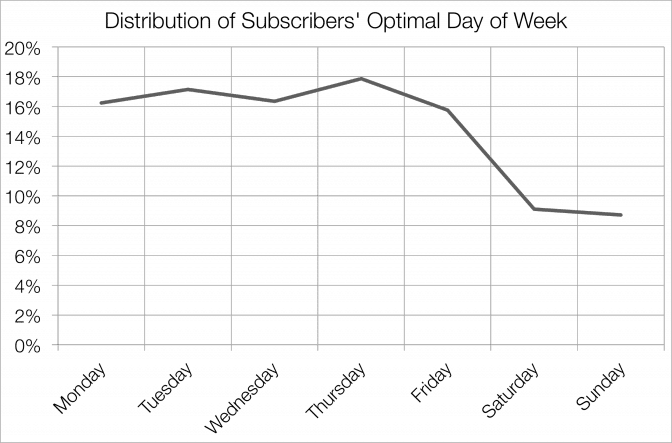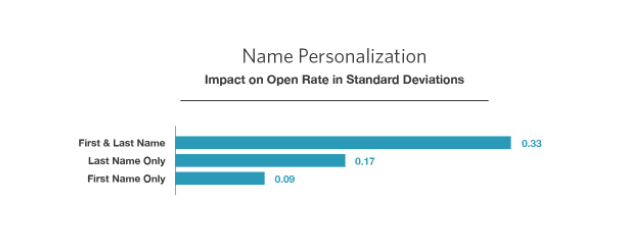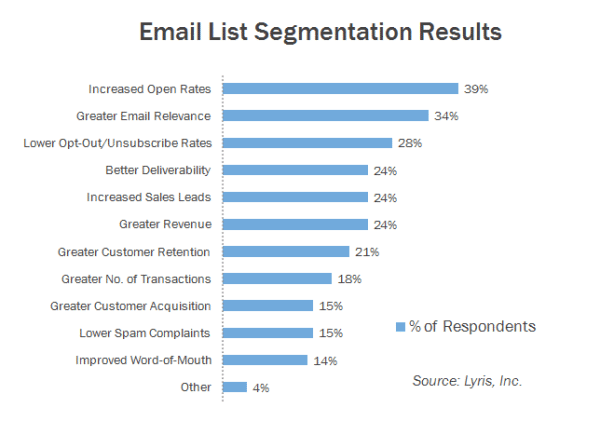As a small business owner, balancing focus with running your business is an inevitable challenge. Sometimes the raw emotions of feeling burnt out, saying goodbye to weekends, and making sure you can sustain while growing are all dependent on business survival.
In short, running a business is not easy.
And, I’ve said this before, but what typically happens in the midst of the craze is that marketing initiatives fall to the wayside. It becomes ‘that one thing’ you will get to as your list continues to build.
However, there’s an easier way to get marketing working for you and you won’t have to spend a fortune to start seeing progress either.
The answer? Email marketing.
Yes, email marketing is nothing new, but I can’t tell you how many small businesses I work with today aren’t utilizing this channel to its fullest.
In this blog post, I’ll highlight 5 email marketing strategies small businesses can take advantage of today…
1) Timing is everything
There are tons of studies that tell you when the best time is to send emails to get the highest open rates and responses. The key to knowing when the best time is for you is to simply test it out.
As a baseline, here’s a study by MailChimp showing the optimal days to send your emails. Take this information as a basis to start sending out your promotional emails and your newsletters.

Doing so will help you determine which times and days yield the highest engagement rates. From there, you can ensure that the right messaging is sent to help drive sales and retention.
2) Personalize your emails
Relevant emails drive 18x more revenue than broadcast emails. Make sure you utilize the data you’ve collected to properly segment your subscribers and you’re creating targeted campaigns to each.
More specifically, personalized emails generate up to 6x higher revenue than non-personalized emails. For starters, you can look at personalizing subject lines. Take MailChimp’s report, based on sending 24 billion emails and studying subject lines with over 20,000 distinct words, they discovered that:
- Even though the most common approach in sending emails is using the first name, emails with the last name had a slightly better open rate.
- Mail subject lines with the first and last names had the highest open rates.
 Also, make sure you do the following to help get you moving in the right direction:
Also, make sure you do the following to help get you moving in the right direction:
- Get the right information up front. This includes the recipient’s name, email, address, their interests, etc.
- Use your real name and email. As a small business owner, make sure you are accessible to those you are emailing. So rather than having an email address like “noreply@yourbusiness.com” – include your actual email and also your real signature.
3) Give away something
Nothing is more off-putting than only sending emails to get sales. Rather, find a way to connect with your subscribers by providing something of value such as free content that they can download and promotional coupons they can use.
In order to make giveaways work well with a higher potential to drive the type of results you want, consider the following:
- Have a goal in mind. Know what you’re trying to achieve.
- Hone in on ‘who’ you are going after.
- Make sure the prize is something people actually want. Here are a few ideas:
- Gift cards
- Free products and services for a limited time
- Tech gadgets (think beyond the iPad, e.g. Sonos, Nest, wearables, etc.)
- Travel
- Free content such as guides, checklists, white papers, webinars, videos, etc.
- Discounts
- Actionable tips around industry-specific use cases
4) Segment your subscribers
According to a Hubspot study, email segmentation resulted in higher open rates, overall engagement, and ultimately, achieving better results driving more sales.

Here are a few ways you can segment your list of subscribers:
- Segment by industry: Do you offer services and products to businesses or consumers? Knowing the industry of your subscribers is a great way to segment your email campaigns. For example, a business that sells car parts would engage at a much higher rate if they receive email campaigns on car products, compared to a business that sells software.
- Segment by company size: Segmenting email campaigns by company size or annual revenue is a great way to increase response rates. A small business that employs 5 people is not likely ready for the biggest industry conference of the year, whereas a business that employs 750 people might be a better fit.
- Segment by sales cycle: Early stage buyers will not be ready for an aggressive sales pitch or one-to-one demo but, they will be more appreciative to receive an industry research white paper. On the other end of the cycle, buyers who are ready to buy will respond well to product webinars or free trial offers.
5) Automate where possible
Before we dive into ways you can automate your email marketing efforts, take a look at the following stats that support automation:
- Automated email gets 119% higher click rates than broadcast emails. It’s about catching people at the right moment when they’re ready to take action.
- Companies who automate emails are 133% more likely to send messages that coincide with the purchase cycle of their customers. Know that focusing on relevant offers and content will lead to making more sales.
- Over time, transactional emails can lead up to a 3% increase in revenue. Be sure to include an option to ‘buy’ within your automated emails so as long as the content is relevant to the subscriber.
Here are a few example automated email campaigns you can test out:
- Promotional emails and sales notifications
- New product launches or brand news
- Newsletters that customers have opted into
- Refer-a-friend campaigns
- Welcome messages
- Onboarding
- Activation
- Milestones and
- Surveys or polls
- Purchase behavior in the past
Final Thoughts
Making email marketing work for you comes down to the right set up with your subscribers in mind. Add value with every piece of communication you send out, ensure relevancy with subscribers, and measure everything you do.






One Response